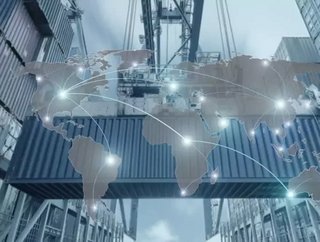Gartner: 3 areas supply chain leaders must prioritise for the future

Disrupt or be disrupted.
That is the reality facing businesses and their supply chain organizations in the digital era, where business models change as quickly as new competitors or new market opportunities emerge.
Opening the Gartner Supply Chain Executive Conference this week in Phoenix, Arizona, Debra Hofman, vice president and distinguished analyst at Gartner, told the audience of supply chain strategists that great supply chain leaders create a vision for what’s possible in the future amid the realities they face today. They need the ability to anticipate and respond to future events with integrated plans capable of responding to disruptive business scenarios.
“You will need to expand your vision and redefine the notion of a supply chain,” said Ms. Hofman. “Traditional supply chain strategies that focused on incremental change, being risk-averse, and that are measured mostly on cost savings and efficiencies, will no longer win.”
Ms. Hofman outlined three areas that supply chain leaders should focus on to create their vision for the future.
New customer experiences
We are entering the age of “experience” economies. This means that the way companies deliver customer value is different, and the customer experience is the new battlefield for competitive differentiation. The new competitive differentiator is understanding what customers want before they ask for it, sometimes solving problems customers didn’t realize they had.
Customers today are focused on getting what they want when they want it. Creating that superior customer experience can include delivering personalized, or smart products and services, with immediate access and delivery where and when the customer wants them. Or ensuring that corporate social responsibility (CSR) initiatives are built into the supply chain to provide sustainable purpose and products to customers.
“These customer experiences will be delivered through disruptive business models called ecosystems, fueled by virtual connections that enable companies to come together and deliver the customer experience in ways they couldn’t before,” said Ms. Hofman.
The new virtual ecosystem
The concept of a business ecosystem is not new. Cars, for example, have evolved to become platforms delivering a customer experience that draws on a cross-industry ecosystem of partners, from the car manufacturer to companies that specialize in communications, entertainment and navigation. What is changing with these ecosystems is the rise of digital connections combined with digital products.
Products and services delivered through the ecosystems of the future are connected by electronic touchpoints called application programming interfaces (APIs). The connection is digital and the product is digital. Michael Burkett, vice president and distinguished analyst at Gartner, said these virtual ecosystems will disrupt supply chains.
“Supply chain leaders will orchestrate product and solution development across the ecosystem, combining input from players previously unknown to them. They will design the ecosystem supply network and manage the performance of the ecosystem with their partners,” said Mr. Burkett. “Ecosystems are the future of the digital business world. Every company will compete in a virtual ecosystem.”
New digital technologies
Underlying and fueling all of this are new digital capabilities. As supply chains build digital maturity, the use of various technology evolves. “Our business lives and our supply chains will be ecosystem-driven, crowdfunded, socially agreed, 3D-printed, drone-inspected, sharing-economy-provided, usage-metered, predictively maintained and blockchain-assured,” said Mr. Burkett. “These new digital capabilities are also catalyzing changes to the very notion of what we mean by supply chain.”
Take artificial intelligence (AI), for example. Mr. Burkett said the rise of AI is enabling a future in which a supply chain will be a dynamic, self-adapting organism to a constantly changing environment, much like the human brain.
“The supply chain of the future could look like one in which customers and partners may be machines that are acting and negotiating on their own, with little to no human intervention. This supply chain can digest massive amounts of data, anticipate customer needs, predict when critical suppliers will shut down and then, autonomously and dynamically reconfigure the network to respond, making decisions to qualify and connect, all at the speed of digital.”
Gartner analysts are providing additional analysis and information on supply chain trends at the Gartner Supply Chain Executive Conferences taking place through Thursday in Phoenix, AZ and September 20-21 in London. You can follow news and updates from the events on Twitter using #GartnerSCC.






